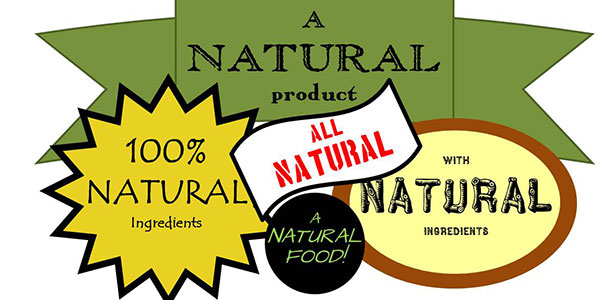The word “natural” appears on an inordinate number of food and product labels. It’s everywhere. But what—exactly—does it mean? Consumers have been asking that question for decades.
In 1993, following two years of exploration, the Food and Drug Administration (FDA) determined it would not engage in rulemaking to define “natural.” The agency stated that it would maintain its policy to interpret the term “natural” as meaning that “nothing artificial or synthetic (including all color additives regardless of the source) has been included in, or has been added to, a food that one would not normally expect to be in the food.”
The challenge? That policy excludes a whole host of things, including GMOs, use of pesticides, animal husbandry practices, and types of manufacturing and processing methods. Consumers are not exactly aware of these gaps either. Citing a Consumer Reports study, USA Today reported that two-thirds of Americans think “natural” on a label means it contains no artificial ingredients, pesticides or genetically engineered organisms.
Citizens, corporations and industry organizations alike are ready for clarity. According to a recent NPR report, three petitions have prompted the FDA to re-visit the possibility of defining the term “natural.” And they are calling for your comments.
Be a truly conscious eater. Ponder the questions below and add your voice to the discussion. Submit your comments to the FDA by February 10, 2016.
Here’s the list of considerations—straight from the website:
We invite interested persons to comment on the use of the term “natural” in the labeling of human food products, including when, if ever, the use of the term is false or misleading (FDA-2014-N-1207). We are particularly interested in responses to the following questions:
- Should we define, through rulemaking, the term “natural?” Why or why not?
- Should we prohibit the term “natural” in food labeling? Why or why not?
- If we define the term “natural,” what types of food should be allowed to bear the term “natural?”
- Should only raw agricultural commodities be able to bear the term? Why or why not? Section 201(r) of the FD&C Act defines the term “raw agricultural commodity” as “any food in its raw or natural state, including all fruits that are washed, colored, or otherwise treated in their unpeeled natural form prior to marketing.”
- Should only single ingredient foods, e.g., bottled water or bagged spinach, be able to bear the term? Why or why not?
- If multi-ingredient foods should be able to bear the term, what type(s) of ingredients would disqualify the food from bearing the term? Please explain why such disqualification would be warranted.
- We are interested in any data or other information to suggest that consumers associate, confuse, or compare the term “natural” with “organic” (the USDA Agricultural Marketing Service administers the National Organic Program, which enforces laws and regulations regarding certified organic foods). We are interested in data and other information about consumers’ understanding of foods labeled “natural” versus “organic.” Is the term “natural” on food labels perceived by consumers the same way as “organic?” Or is “natural” perceived by consumers to be “better” (or not as good as) “organic?” Please provide consumer research or other evidence to support your comment.
- If we were to revise our policy regarding the use of the term “natural” or engage in rulemaking to establish a regulatory definition for “natural,” should certain production practices used in agriculture, for example, genetic engineering, mutagenesis, hybridization, the use of pesticides, or animal husbandry practices, be a factor in defining “natural?” Why or why not?
- We are interested in any data or other information to suggest that consumers associate, confuse, or compare the term “natural” with “healthy.” We have a regulation that defines the term “healthy” when used as an implied nutrient content claim with specific conditions related to the food’s nutrient profile that must be met in order to use the term on the label or in labeling of a food (see § 101.65(d)). We are interested in data and other information about consumers’ understanding of foods labeled “natural” versus “healthy.” Is the term “natural” on food labels perceived by consumers the same way as “healthy?” Or is “natural” perceived by consumers to be “better” (or not as good as) “healthy?” Do consumers view “natural” and “healthy” as synonymous terms? Please provide consumer research or other evidence to support your comment.
- Should manufacturing processes be considered in determining when a food can bear the term “natural?” For example, should food manufacturing processes, such as drying, salting, marinating, curing, freezing, canning, fermenting, pasteurizing, irradiating, or hydrolysis, be a factor in defining “natural?”
- Should the term “natural” only apply to “unprocessed” foods? If so, how should “unprocessed” and “processed” be defined for purposes of bearing the claim? If the term natural should include some processing methods, what should those methods be? In making determinations related to processing, should one look at the process to make a single ingredient of a food, or does one evaluate the process done to the formulated finished food product (or both)?
- The current policy regarding use of the term “natural” hinges in part on the presence or absence of synthetic ingredients. For example, under the current policy synthetic forms of Vitamin D would not be used in a food claiming to be “natural,” whereas naturally sourced Vitamin D (e.g., from salmon or egg yolks) could be. Should the manner in which an ingredient is produced or sourced affect whether a food containing that ingredient may be labeled as “natural?” Please explain your reasoning.
- What can be done to ensure that consumers have a consistent and accurate understanding of the term “natural” in food labeling to ensure that it is not misleading?
- What are the public health benefits, if any, of defining the term “natural” in food labeling? Please provide supporting data and other information to support your comment.
- Should “natural” have some nutritional benefit associated with it? If so, what should be the benefit? What nutrients should be considered? What data are available to support the association between “natural” and a given nutritional benefit, and/or between “natural” and certain nutrients?
- How might we determine whether foods labeled “natural” comply with any criteria for bearing the claim?

